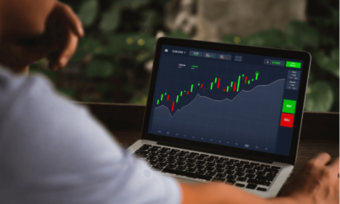Investing in emerging markets

If you’re thinking about investing overseas you may be considering emerging markets. Here are a few things you need to know. Plus the markets the experts think have potential.
Investors aren’t limited to what’s on the menu in Australia. International markets can add valuable diversity to your portfolio, and emerging markets can be among the most exciting areas to invest in.
Evan Lucas, Market Strategist at InvestSMART sums up the appeal of emerging markets saying, “These nations are growing at rates developed nations could only dream of.”
It’s the potential to be part of that future growth that’s so appealing. As Mr Lucas described it, “Emerging markets are the future of global growth investing”.
“Emerging markets should form part of an investor’s portfolio because they provide growth opportunities well beyond Australian and other developed country equities,” said Shane Oliver, Head of Investment Strategy and Chief Economist, AMP Capital.
What are emerging markets?
Emerging market economies are in the process of becoming industrialised. Per capita income is low but growing fast, and as Mr Lucas explained, emerging markets “tend to be hubs of manufacturing, technology and innovation”.
Daniel Rolley, Head of Research at Chancellor Portfolio Services, pointed out other features. “Emerging markets are the beneficiaries of cheap equity valuations, strong population growth and capital investment catch up,” he said.
Moreover, Mr Rolley believes emerging markets will generate over 90% of the world’s population growth in the coming decade.
What areas fall into emerging markets?
The MSCI Emerging Market Index is a handy tool that shows which nations are classified as emerging markets. As you can see in the table below, the Index spans the Americas, Europe, the Middle East and Asia, and includes nations as diverse as Argentina, Russia, China, South Africa and the United Arab Emirates.
| Emerging Markets | ||
|---|---|---|
| Americas | Europe, Middle East and Africa | Asia |
| Argentina | Czech Republic | China |
| Brazil | Greece | India |
| Chile | Hungary | Indonesia |
| Colombia | Poland | Korea |
| Mexico | Russia | Malaysia |
| Peru | Turkey | Pakistan |
| Egypt | Philippines | |
| Qatar | Taiwan | |
| Saudi Arabia | Thailand | |
| United Arab Emirates | South Korea | |
| South Africa | ||
| Source: MSCI Emerging Markets Index https://www.msci.com/market-cap-weighted-indexes | ||
For the record, economies with a long way to go on the development scale such as Kazakhstan, Kenya, Oman and Bangladesh, are regarded as “frontier markets”.
Who should consider investing in emerging markets?
“Emerging markets are best suited to investors seeking long-term growth, who are comfortable with high levels of volatility,” said Andrew Dunbar, Director and Senior Financial Planner with APT Wealth Partners.
Without doubt, emerging markets don’t always offer smooth sailing. In 2011 shares in emerging markets fell by 18.44%. Back in 2008, emerging markets plunged 41%.
It is possible to manage this risk said Shane Oliver, Head of Investment Strategy and Chief Economist, AMP Capital. “The key is to balance exposure to emerging markets against other assets such as government bonds that have low correlation to equity markets,” he explained.
What sort of returns do emerging markets offer?
Emerging markets have dished up impressive gains in recent years including returns of 13.07% in the past 12 months but Australian shares have performed even better. The table shows the returns for both over longer periods.
| Sharemarket returns | ||||
|---|---|---|---|---|
| 1-yr | 3-yr (%pa) | 5-yr (%pa) | 10-yr (%pa) | |
| MSCI Emerging markets | 13.07% | 12.50% | 7.69% | 6.76% |
| Australian shares | 24.34% | 12.02% | 9.00% | 8.75% |
| Net returns to 31 January 2020. Sources: MSCI Emerging Markets Index (AUD) and S&P/ASX 200 (AUD) | ||||
Which emerging markets do the experts think have potential?
Each emerging market is in a different stage of economic development. All have tremendous growth potential – and each comes with a variety of risks. This article outlines some of the risks of investing overseas.
In Mr Lucas’s opinion Turkey is the most exciting European-facing EM but it has geopolitical risk. “South Africa is a fast-growth nation with huge resources and a rising middle class, but it too has geopolitical risk,” he added.
Dr Oliver is a fan of emerging markets in Asia. “Asian markets have the greatest long-term growth potential and this area is, so far, being hardest hit by the coronavirus outbreak and so has the greatest potential to rebound,” he noted.
“On balance I would favour Chinese shares for their rebound potential, and the Philippines and Malaysia because they are the cheapest relative to their long-term averages,” Dr Oliver added.
Given the uncertainty around the coronavirus, if you are thinking of buying into these markets, Dr Oliver recommended waiting “for clearer evidence that the outbreak is starting to come under control before buying into these markets”.

China
According to Mr Lucas, China is the best example of emerging market growth: “The rise of China’s middle class and the rise of Chinese firms, have seen China become the world’s second biggest economy and it is still expanding. If you had invested in China over the past 20 years, the returns – although volatile, are over 350%.”
However, Mr Rolley sees two elephants in the room for China – the US-China trade war and the coronavirus outbreak.
“While there has been a Phase 1 deal signed between the US and China, we think there will be ongoing tensions for the foreseeable future. This disruption will lead to greater volatility for both economies and markets,” said Mr Rolley.
On the coronavirus, Mr Rolley said, “China has taken unprecedented actions to shut down a large proportion of its economy. This will place a short-term squeeze on supply chains across the world, which in our view is being underestimated by markets.”
Mr Rolley added that Vanguard’s FTSE Emerging Markets ETF is an access point to invest in China as its holdings include e-commerce giant Alibaba, which has over 700 million monthly active users – nearly half the population of China. The table below shows other ETFs that invest in China.
| ETFs that invest in China | |||||
|---|---|---|---|---|---|
| ETF Name | ASX Code | Annual fee | 1-year performance | 3-year performance | 5-year performance |
| Vanguard FTSE Emerging Markets Shares ETF
|
VGE | 0.48% | 12.3% | 10.23% | 6.28% |
| VanEck Vectors China New Economy ETF*
|
CNEW | 0.95% | 50.9% | – | – |
| VanEck Vectors ChinaAMC CSI 300 ETF
|
CETF | 0.6% | 27.37% | 9.19% | 4.04% |
| *Fund launched November 2018. This a selection of ETFs available that offer investors exposure to China. These are not recommendations. | |||||
India
Mr Lucas believes India is “likely to dominate the emerging marketspace over the coming decades”.
“India is a nation with high innovation, high levels of education, and a banking and finance system that is very mature. India is the one to watch, and one that is likely to see strong capital flows as it moves up the economic ladder,” he noted.
| ETFs that invest in India | |||||
|---|---|---|---|---|---|
| ETF Name | ASX Code | Annual fee | 1-year performance | 3-year performance | 5-year performance |
| ETFs Reliance India Nifty 50 ETF | NDIA | 1.0% | 10.84%* | – | – |
| BetaShares India Quality ETF
|
IIND | 0.8% | 10.71%** | – | – |
| SPDR S&P Emerging Markets Fund | WEMG | 0.65% | 14.25% | 13.13% | 7.66% |
| This a selection of ETFs available that offer investors exposure to India. These are not recommendations. *Fund launched June 2019. **Fund launched August 2019 | |||||
Thailand
Mr Dunbar nominated Thailand as an emerging market worth further research. “Thailand has benefited from the US/China trade war as companies have moved operations to Thailand to escape US tariffs,” he said. The challenge for investors is that many ETFs listed on the Aussie sharemarket have little if any exposure to Thailand.
Brazil
Mr Lucas said that with its sheer size, population, resources and US-facing industry Brazil is also catching a lot of attention.
| ETFs that invest in Brazil | |||||
|---|---|---|---|---|---|
| ETF Name | ASX Code | Annual fee | 1-year performance | 3-year performance | 5-year performance |
| Fidelity Global Emerging Markets Fund*
|
FEMX | 0.99% | 27.62% | 18.46% | 11.03% |
| BetaShares Legg Mason Emerging Markets Fund*^
|
EMMG | 1.0% | 21.54% | – | – |
| iShares MSCI Emerging Markets ETF
|
IEM | 0.67% | 8.96% | 11.05% | 6.60% |
| *Listed managed fund. ^Fund launched May 2019 | |||||
If you have an appetite for risk and a long-term investment horizon, emerging markets can offer plenty of opportunities for returns. Just be sure you can handle the potential downsides. It may be worth seeking expert advice before making any decisions about investing in emerging markets.
Main image source: GrAl (Shutterstock)
This article was reviewed by our Editorial Campaigns Manager Maria Bekiaris before it was updated, as part of our fact-checking process.

Try our Online Share Trading comparison tool to instantly compare Canstar expert rated options.





